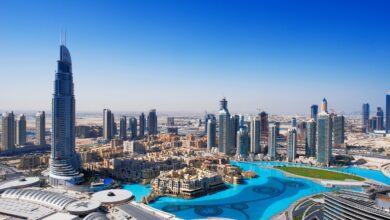What are the implications of deepfake technology on information authenticity and media trust?

Introduction
Deepfake technology, which uses artificial intelligence to create realistic but fake images, audio, and videos, has revolutionized the media landscape. While offering potential benefits in entertainment and education, it also poses significant threats to information authenticity and media trust. This article delves into the multifaceted implications of deepfakes, examining how they affect various aspects of society.
The Rise of Deepfake Technology
Deepfakes have emerged due to advancements in machine learning and AI, specifically generative adversarial networks (GANs). These systems can generate highly realistic digital content, making it increasingly difficult to distinguish between real and fake media.
How Deepfakes Work
Deepfake technology involves training a neural network on vast amounts of data to generate new content. The process includes:
- Collecting data on the target subject.
- Using GANs to create fake content.
- Refining the content through iterations to enhance realism.
The Impact on Information Authenticity
Deepfakes undermine the authenticity of information by making it challenging to verify the truth. They can be used to spread misinformation, manipulate public opinion, and create confusion, leading to a significant erosion of trust in media.
Media Trust and Public Perception
The proliferation of deepfakes has led to a decline in media trust. Audiences find it harder to discern credible sources from manipulated content, resulting in skepticism towards news outlets and media platforms.
Legal and Ethical Concerns
Deepfakes raise numerous legal and ethical issues. They can be used for malicious purposes such as identity theft, blackmail, and defamation, prompting a need for robust legal frameworks to address these challenges.
The Role of Social Media
Social media platforms are primary conduits for the dissemination of deepfakes. These platforms struggle to regulate and remove deepfake content promptly, contributing to the rapid spread of misinformation.
Potential Benefits of Deepfakes
Despite the risks, deepfakes offer some positive applications:
- Entertainment: Enhancing movie and game production with realistic visual effects.
- Education: Creating engaging and interactive learning experiences.
- Healthcare: Assisting in medical simulations and training.
Deepfakes in Politics
The political sphere is highly vulnerable to deepfakes. They can be used to create fake speeches or actions of politicians, potentially influencing elections and undermining democratic processes.
Economic Implications
The rise of deepfakes affects the economy by impacting industries such as media, cybersecurity, and digital forensics. Companies must invest in technologies to detect and counter deepfakes, leading to increased operational costs.
Psychological Effects on the Public
Deepfakes can cause psychological distress, as individuals may feel violated when their likeness is used without consent. Additionally, constant exposure to deepfake content can lead to anxiety and distrust in information sources.
Countering Deepfake Technology
Efforts to counter deepfakes include developing advanced detection tools, creating public awareness campaigns, and implementing stricter regulations. Collaboration between tech companies, governments, and academia is crucial in this fight.
The Future of Deepfake Technology
As deepfake technology evolves, it will become more sophisticated and harder to detect. Continuous innovation in detection methods and legal measures will be essential to mitigate its adverse effects.
Ethical AI Development
To address the challenges posed by deepfakes, ethical AI development is imperative. Ensuring transparency, accountability, and fairness in AI systems can help prevent misuse and build trust in technology.
Case Studies of Deepfake Use
Examining case studies of deepfake use provides insight into their real-world impact. Notable examples include:
- Political Manipulation: Fake videos of politicians.
- Celebrity Deepfakes: Unauthorized use of celebrity images in fake videos.
- Corporate Espionage: Using deepfakes to manipulate stock markets.
Public Awareness and Education
Raising public awareness about deepfakes and educating individuals on how to identify fake content are critical steps in combating misinformation. Media literacy programs can empower people to critically evaluate information sources.
The Role of Journalists
Journalists play a vital role in maintaining information authenticity. They must adopt new verification techniques and collaborate with tech experts to identify and expose deepfakes.
Technological Innovations in Detection
Advancements in AI and machine learning are driving the development of sophisticated deepfake detection tools. These technologies can analyze content for inconsistencies and trace its origins, helping to verify authenticity.
Collaboration Between Stakeholders
Combating the negative impact of deepfakes requires collaboration between various stakeholders, including governments, tech companies, and civil society. Joint efforts can lead to more effective solutions and policies.
Regulatory Frameworks
Governments worldwide are beginning to recognize the need for regulatory frameworks to address deepfakes. These regulations must balance protecting individual rights with preventing malicious use of technology.
Challenges in Deepfake Detection
Detecting deepfakes presents several challenges, including the constant evolution of the technology and the availability of open-source deepfake tools. Researchers must stay ahead of these developments to create effective detection methods.
The Role of AI in Counteracting Deepfakes
AI itself can be a powerful tool in counteracting deepfakes. Developing AI systems capable of detecting and flagging deepfake content in real-time can significantly reduce its spread.
The Importance of Digital Literacy
Digital literacy is crucial in the fight against deepfakes. Educating the public on how to navigate the digital landscape and recognize fake content can reduce the impact of misinformation.
The Ethics of Deepfake Creation
Creating deepfakes raises ethical questions about consent and privacy. Ensuring that individuals’ rights are respected and obtaining proper consent before creating deepfake content are essential ethical considerations.
The Legal Landscape
The legal landscape surrounding deepfakes is still evolving. Laws must adapt to address the unique challenges posed by this technology, including issues of jurisdiction and enforcement.
Psychological Warfare and Deepfakes
Deepfakes can be used in psychological warfare to spread propaganda and create social discord. Understanding and countering these tactics is vital for national security.
The Role of Tech Companies
Tech companies have a responsibility to develop and implement tools to detect and mitigate the spread of deepfakes. Their proactive involvement is crucial in safeguarding information authenticity.
Future Predictions
Predicting the future of deepfake technology involves considering its potential for both beneficial and harmful applications. Ongoing research and development will shape its trajectory and influence how society adapts to this technology.
FAQs
How do deepfakes affect media trust?
Deepfakes erode media trust by making it difficult to verify the authenticity of content, leading to increased skepticism and distrust in media sources.
Can deepfakes be detected?
Yes, deepfakes can be detected using advanced AI and machine learning tools designed to identify inconsistencies and trace the origins of digital content.
What legal measures are being taken against deepfakes?
Various governments are developing regulatory frameworks to address deepfakes, including laws that criminalize the malicious use of this technology and protect individuals’ rights.
What are some positive uses of deepfakes?
Positive uses of deepfakes include enhancing entertainment through realistic visual effects, creating interactive educational content, and assisting in medical training simulations.
How can individuals protect themselves from deepfakes?
Individuals can protect themselves by staying informed about deepfakes, verifying the authenticity of content before sharing, and using digital literacy skills to navigate the online information landscape.
What is the role of journalists in combating deepfakes?
Journalists play a crucial role in maintaining information authenticity by adopting new verification techniques, collaborating with tech experts, and exposing deepfake content.
Conclusion
Deepfake technology presents both opportunities and challenges. While it offers exciting possibilities in various fields, it also threatens information authenticity and media trust. Addressing the implications of deepfakes requires a multifaceted approach involving technological innovation, legal frameworks, public awareness, and ethical considerations. By working together, society can harness the benefits of deepfakes while mitigating their potential harm.




